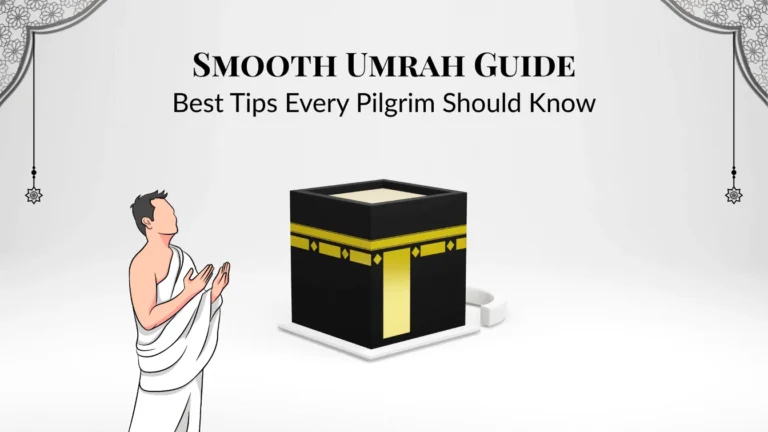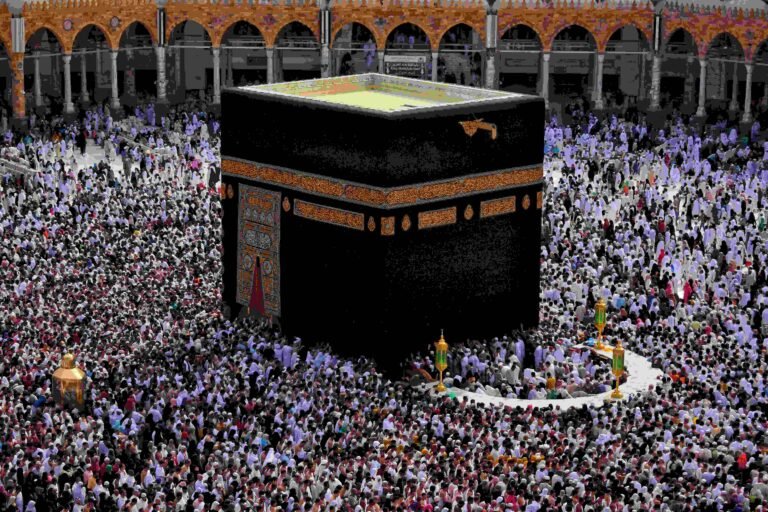What is Mahram?
In Islam, a mahram for women is a person with whom marriage is permanently forbidden due to close kinship. This prohibition is due to blood relations, breastfeeding ties, or marital connections. This concept is derived from Islamic jurisprudence and is important in the context of social interactions and Islamic dress codes.
The term “mahram” comes from the Arabic root word “ḥ-r-m,” which conveys the sense of being sacred or forbidden. A mahram is someone a Muslim woman can interact with more freely and is not required to observe the full hijab in their presence.
This concept is deeply rooted in Islam’s principles of modesty and family honor. The religious beliefs of the Mahram woman might seem like a barrier to most, but they originate from the wisdom of Allah (SWT) to create a safe and bearable community. This ensures that values and relationships are respected. If you want to know more about Mahram for women, please keep reading to find out!
Mahram Relationships for Women
Understanding the different types of Mahram relationships for women is important in following Islamic guidelines on modesty, interaction, and travel. These relationships are categorized based on blood, marriage, and breastfeeding connections. Now, let’s explore the specific relationships that qualify as Mahram for women in Islam:
Mahram by Blood
It is forbidden for a man to marry women who are related to him by blood. Allah (SWT) in Surah al-Noor says,
“And tell the believing women to lower their gaze and guard their chastity, and not to reveal their adornments except what normally appears. Let them draw their veils over their chests and not reveal their (hidden) adornments except to their husbands, their fathers, their fathers-in-law, their sons, their stepsons, their brothers, their brothers’ sons or sisters sons, their fellow women, those (bondwomen) in their possession, male attendants with no desire, or children who are still unaware of women’s nakedness. Let them not stomp their feet, drawing attention to their hidden adornments. Turn to Allah in repentance all together, O believers, so that you may be successful.” (Surah An-Nur ayah 31)
Click this link to the Quran to gain detailed insights into the above ayah (verse). The Quran provides a wide explanation, translations, and tafsir. Listed below are Mahram in Islam by blood:
- Father: A woman’s biological father is her Mahram.
- Son: A woman’s biological son is her Mahram.
- Brother: A mahram is a full brother (sharing both parents) or a half-brother (sharing one parent).
- Uncle: Both maternal (mother’s brother) and paternal (father’s brother) uncles are Mahram.
- Nephew: The sons of a woman’s siblings (brothers and sisters) are Mahram.
- Grandfather: Both maternal and paternal grandfathers are Mahram.
- Grandson: The sons of a woman’s children (both sons and daughters) are Mahram.
Mahram by Marriage
Marriage creates new family ties that develop the circle of mahram relationships for women. When a man and a woman get married in Islam, their families become connected in a unique way. Despite not being blood relatives, they are considered mahram to each other. They have specific legal and social guidelines regarding their interactions and marriage options.
For more information about marriage in Islam, visit this blog post: Marriage in Islam According to the Quran & Sunnah.
Allah (swt) says in the Holy Quran,


Listed below who are Mahram in Islam by marriage:
- Father-in-law (A woman’s husband’s father is her Mahram)
- Son-in-law (A woman’s daughter’s husband is her Mahram)
- Stepfather (If a woman’s mother remarries, the new husband becomes her stepfather and is considered her Mahram, provided the marriage was consummated)
- Stepson (If a woman marries a man who already has a son from a previous marriage, this stepson is her Mahram, provided the marriage was consummated)
Mahram by Breastfeeding
In Islam, breastfeeding establishes a strong bond that creates mahram relationships. When a woman breastfeeds two babies, she becomes their “Razai Mother,” and her children become siblings to those babies. A baby becomes mahram after being breastfed at least five times. Following the lunar calendar, breastfeeding must occur within the first two years of the child’s life. This practice shows that breastfeeding makes a special kind of family bond.
Hazrat Aishah (RA) narrated that:
The Prophet entered upon her, and there was a man with her. He said: “Who is this? She said: “This is my brother.” He said: “Look at whom you allow to enter upon you because breastfeeding (that makes a person Mahram) is that which satisfies hunger.”
[Sunan Ibn Majah 1945]
Narrated by Hazrat Abbas (RA):
The Messenger of was offered the daughter of Hamzah bin Abdul-Muttalib in marriage, and he said: “She is the daughter of my brother through breastfeeding, and breastfeeding makes unlawful (for marriage) the same things that blood ties make unlawful.”
[Sunan Ibn Majah 1938]
Listed below are mahram in Islam by breastfeeding:
- Foster Mother: The woman who breastfeeds a child, making her the foster mother and Mahram to her child.
- Foster Siblings: Other children breastfed by the same woman (foster siblings) are Mahram to each other.
- Foster Mother’s Husband: The husband of the foster mother also becomes a mahram.
- Foster Mother’s Children: The biological children of the foster mother are Mahram to the foster child.
Therefore, determining who is a Mahram for a woman through foster relations can be complicated, and it is advised to consult a scholar for help when needed.
Awrah of Women in Front of Mahram
The term awrah refers to the parts of the body that should be covered, also known as the private parts of the body. When a woman is in the presence of her mahram, the guidelines for covering her awrah are more relaxed than when she is in the presence of non-mahram men.
To learn more about Ethical Dressing in Islam, click the link: Ethical Dressing in Islam: Principles, Practices, and Permissibility.
Here are some guidelines for covering Awrah in the presence of Mahram:
Relaxed Coverage
- Hair, Neck, and Forearms: In the presence of her Mahram, a woman does not need to cover her hair, neck, and forearms. This allows for a more relaxed and natural interaction within the family.
- Home Attire: Women can wear more relaxed home attire, such as short sleeves or knee-length dresses, in front of their Mahram. However, maintaining modesty is still essential.
Maintaining Modesty
- Etiquette and Respect: While the guidelines are more relaxed, it is still essential to maintain a level of etiquette and respect in dressing. Tight or overly revealing clothing that might compromise modesty should be avoided.
- Contextual Sensitivity: Sensitivity to cultural and family norms is important. Some families, even among Mahram, may have specific expectations or comfort levels regarding modesty.
Practical Scenarios
- Inside the Home: Women can be more relaxed in their dress around their Mahram at home. For example, they can wear a comfortable T-shirt and pants or a modest dress.
- Extended Family Gatherings: During family gatherings with mahram relatives, women can maintain a comfortable but modest dress code, such as a long skirt and blouse without a headscarf.
This allowance is based on maintaining modesty and respect while following Islamic teachings on proper behavior and dress.
The hijab promotes humbleness and reflects faith in Muslim women. It fosters pride and serves as a symbol of religious identity and cultural belonging. The hijab also helps maintain privacy. Click this link to learn more about the Importance of the Hijab for Muslim Women.
Frequently Asked Questions (FAQs)
Is Cousins Considered Mahram
Understanding whether cousins are considered Mahram is essential for following Islamic guidelines on modesty and interaction. The status of cousins, including the cousin of a mother, requires specific clarification.
First cousins: Both maternal and paternal are not considered Mahram. In Islamic law, first cousins can marry each other, which means they do not fall under the category of individuals with whom marriage is permanently forbidden. Thus, interactions with first cousins should follow the guidelines applicable to non-mahram men.
Guidelines for Interaction: Women should maintain modesty by observing the appropriate dress code (such as wearing a hijab) and adhering to Islamic interaction principles with their first cousins. This includes avoiding physical contact and maintaining proper decorum in conversations and social settings.
Can a Woman do Umrah or Hajj without Mahram?
It is not permissible for a Muslim woman to travel to Hajj or Umrah without a mahram. This action – Hajj without a mahram – is haram because of the hadith of Ibn’ Abbas (may Allah be pleased with him), who said that he heard the Prophet (SAW) saying,
“It is not permissible for a man to be alone with a woman, and no lady should travel except with a Muhram (i.e., her husband or a person whom she cannot marry in any case for ever; e.g., her father, brother, etc.).” Then a man got up and said, “O Allah’s Messenger (SAW)! I have enlisted in the army for such-and-such Ghazwa, and my wife is proceeding to Hajj.” Allah’s Messenger (SAW) said, “Go and perform the Hajj with your wife.”
(Sahih al-Bukhari 3006)
How far can a woman travel without Mahram?
There’s no specific distance mentioned in Islamic texts regarding a woman traveling without a mahram. Here’s a breakdown of the two main viewpoints:
Majority Opinion: Many scholars consider any travel, regardless of distance, to require a mahram for women. This is based on hadiths like “A woman should not travel for more than three days except with a Dhi-Mahram.” (Sahih al-Bukhari 1087)
Modern Interpretations: Some scholars argue that these hadiths were relevant for a time with safety concerns for women traveling alone. In safer environments, they allow travel without a mahram, prioritizing safety over distance.
Is your Brother-in-law your Mahram?
No, your brother-in-law is not your mahram. Since you could marry your brother-in-law if your sister were divorced or widowed, he is not considered a mahram.
Minimum Age for Mahram
The minimum age for a man to be a mahram for a woman is puberty when a boy reaches the age of fifteen years. Age does not change the actual status of non-mahrams becoming mahrams. For instance, a cousin remains a non-mahram regardless of age, and a sibling remains a mahram throughout life.
Conclusion
Understanding who is a mahram in Islam is essential for proper Islamic conduct within family and social settings. Mahram relationships are determined by blood, marriage, or breastfeeding and dictate the level of modesty and interaction allowed between individuals.
The rules surrounding mahram relationships are designed to foster a balanced and respectful environment for women, aligning with the broader objectives of Islamic law and promoting social connection. These guidelines highlight moral goodness and the well-being of the community. By following these rules, individuals help maintain a respectful and noble society.
As we guide Mahram’s relationships with women, we must continue to learn and seek clarification. Engaging in discussions and asking questions about Mahram will deepen your understanding. Feel free to ask questions or share your thoughts; continuous learning and dialogue are essential for spiritual and social growth.










amazing MashaAllah